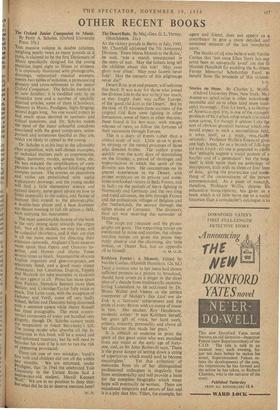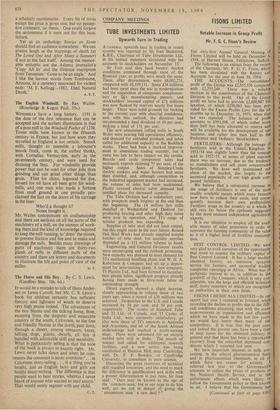Stories on Stone. By Charles L. Wallis.
(Oxford University Press, New York. 30s.) AMERICAN schol. rship is often notoriously recondite and na,re often (and more laud- ably) thorough. Yids fi,t book, a collection of American epit. tvis, is one of the strangest products of the t schol rship which ore could come across, for though it seldom I: cks the sort of obvious ghoulish humour which one Would. expect in such a necrophilons field, it takes itself, as a study, rcm..rkably seriously. Professor Wallis's foreword gives one high hopes, for as a branch of folk-lore (or even kitsch ..rt) one is prepared to adtrfit that 'epitaphs suggest a social pattern of a locality and of a generation': but the book itself is little more than an anthology of inscriptions, each with its three or four lines of data, giving the provenance and some- thing of the circumstances of the person commemorated, As a piece of .research, therefore, Professor W;;Ilis, despite his exhaustive transcriptions, has given us a book which is of little more use to a social historian than a coin-dealer's catalogue is to
a scholarly numismatist. Every bit of trivia except the price is given one, but no percep- tive comment, no thesis. One could forgive the seriousness if it were not for this basic failure.
Yet as an anthology Stories on Stone should find an audience somewhere. We can always laugh at the trappings of death (at The Loved One and After Many a Summer) if not at the fact itself. Among the memor- able epitaphs are the Atlanta journalist's 'Copy All In' and the illiterate inscription from Tennessee: 'Gone to be an angle.' And I like the laconic words from Tombstone, Arizona, in a cemetery renowned for violent ends: M. E. Kellogg-1882. Died Natural Death.' A. S. T.











































































 Previous page
Previous page